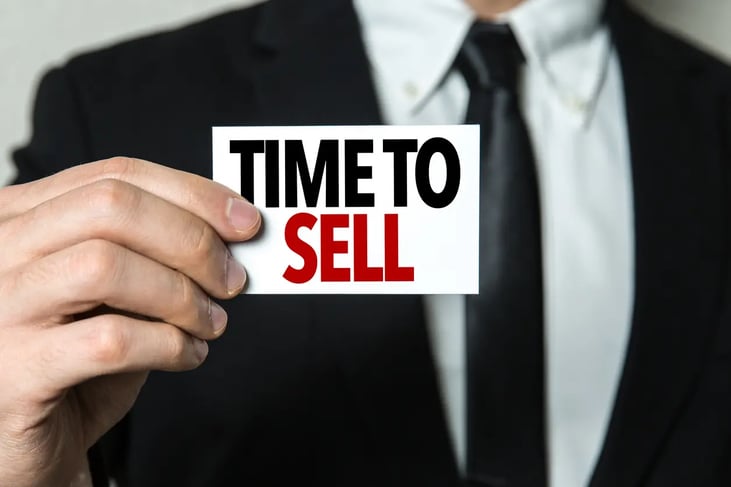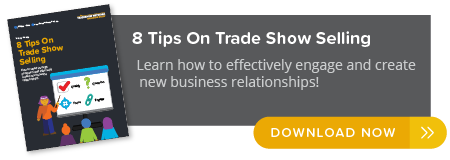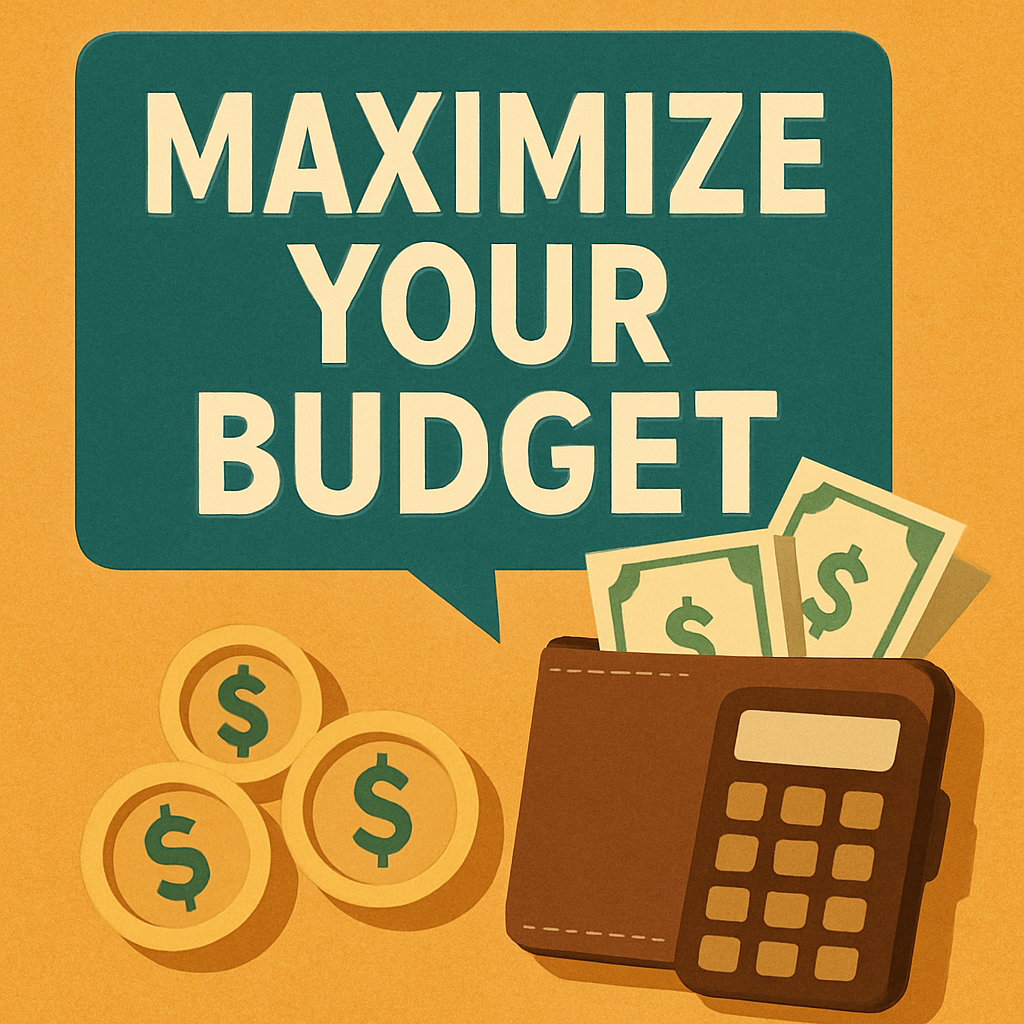Trade show exhibiting is, by far, the best way to gain access to potential customers! But exhibiting costs can be very high - for travel, exhibit fees, booth rental and design, pre-show marketing and at-show communications, and many additional expenses that can really add up. You want - and need - to see a significant return on that investment! You, and every member of your sales team must put forth their best effort to make your company’s trade show marketing effort successful. What’s in it for you? Plenty of opportunity to increase your commission check and bottom line for your company!
Selling at a Trade Show – The “Pre-Planning” Process.
Months before the show, you have started working. You set up appointments with your existing and “most desired” customers. You even sent reminders. If you were smart, you have a nice gift waiting for your best customers and most desired prospects and you let them know that gift will be waiting for them at the booth with their name on it. Early on opening day, you plan to call or text them to let them know you are looking forward to seeing them. Great. Every smart salesperson does all of this and more. Your main goal, however, is not to cement current customer relationships. Instead, it is to obtain the most leads for new potential customers. Your ability to successfully meet this goal depends on whether you are able to grab an attendee’s limited attention and get them to stop walking down the aisle and talk to you.
A Critical “Booth-Selling Skill”.
• Roughly 70% of show attendees have an appointment with, or plan to visit, select companies even before they ever enter the convention center. They are not inclined to stop to talk to anyone on their way. I’ve seen this occur at every show. It’s good for the exhibitors on their list, but it’s not good for you.
• Many attendees walk the show to get a quick overview all at once. They walk through the aisles looking at products and signs — but not at you. There is so much to distract them. The attendees are so anxious to see what’s new, that they want to walk the show first, before they even think about talking with anyone.
• Some trade show visitors want to get their money’s worth by seeing as many exhibits as they can — as quickly as they can.
Getting trade show attendees to stop walking so you can engage them in a sales conversation is a critical booth selling skill. It is also challenging.
1. Don’t Hesitate-Initiate!
As traffic goes by, stand near the edge of your exhibit. Make eye contact with as many people as you can and smile. If it is the first day of the show and the aisles are jammed, it will be more difficult. Don’t hesitate when someone slows down to smile back or look at your exhibit. You could lose your only chance to make a connection.
2. Ask a Quick Informal Question.
“How do you like the show?” Or, “How are you today?” Ask anything similar that will engage the person or group walking by.
3. Extend Your Hand and Quickly Introduce Yourself.
Just say “Hi, I’m Fred Smith. Where are you folks from?” Be casual and comfortable - as though you are greeting someone in the neighborhood. Don’t come across too aggressively or you will turn people off.
4. Ask Another Question to Generate Small Talk.
• “How do you like the show?”
• “How did you like that opening general session speaker?”
• “What brings you to this show?”
Make appropriate small talk for 30 seconds. Then, move to Step #5 fast.
5. Qualify Quickly.
Just by looking at someone’s badge, you probably know if this person is a prospect. If you’re not sure, ask a quick qualifying question to determine whether you are, in fact, talking to a potential customer.
• “What are you looking for at this show?”
• “Do you use __________ in your operation?”
• “Do you have an application for...?”
While these are examples of questions to start small talk, they are important because they can help to qualify the individual and establish that critical first connection. So many people waste precious time with trade show attendees who were simply curious about their product or service, but were not buyers. Once you know they are not qualified, gracefully suggest they take a look around the booth and move on.
6. Qualified? Then Start Selling.
Start with a “Sales Conversation Starter Question”:
• “Would you like to learn how we are helping customers with our service?”
• “Want to see how we have helped other clients with our solutions?”
• “Would you like to take a look at the latest technology we’ve put into our equipment?”
• “Would you like to see our newest design?”
These questions are like lures in a tackle box. Not every lure works for all situations. Just like a smart fisherman, use experience to gauge the conditions and
select the appropriate lure. Once you find what works best for you, memorize a matrix of questions to ask so you can apply them at the trade shows you attend.
An Insiders Secret to Trade Show Sales Success. If you take a small step toward the product as you ask a “Sales Conversation Starter” question, you will find that your prospect is more likely to follow you. How do I know? Try it. More importantly, stay one-step ahead of the competition. Rise to the challenge of selling on the trade show floor.
7. Close the Deal Right Then and There, or Pull Out Your Appointment Book and Set Up The Opportunity for You to Sell Later!
Getting results in obtaining new leads and selling in a trade show
environment requires savvy, sales expertise, and perseverance.
For now, follow these seven steps to make your trade show sales more rewarding.
8. Follow-Up on those Leads You Feel Are Qualified.
When you go back to your room spend some time on going over your day and jotting down some notes. Who should you contact first, who should you just
email information to. Create a list and prioritize that list so when you return to the office you can hit the ground running. How do you sell? Passive selling does not work. Just collecting business contacts, whether through a drawing or a give-away, is not the same as generating solid leads. Your booth staff needs to interact with each attendee who expresses interest. That means that staff should never be caught sitting down on the job, unless with a prospect. At the other extreme are staffers who are too pushy, forcing passers-by to stop and hear their sales pitch. Even if the person might have been interested in your products, chances are they will want to run in the other direction.
“See more” is another story. You know the type. His convention bag is stuffed with expensive brochures from every booth, which will probably get pitched before packing. If someone is just grabbing everything in sight, chances are it is not a serious prospect. It may even be a competitor. It’s best not to have materials out for anyone to take without first talking with a booth representative.
Qualify Your Prospects.
“The first thing you should do once you meet someone new is establish who they are (buyer, decision maker, supplier, competitor, etc.) and where they’re located. This way you won’t end up spending important time with a person who isn’t responsible for buying your product/service, or who is located in a region your company doesn’t serve. You can find this information out by asking some key questions, looking at their badge, or requesting a business card, which will have the person’s title and address.”
Ask About Their Business Concerns.
Lest you appear too pushy, make sure to engage the prospect in conversation about what brings him or her to the show and what interests them about your products or services. Better yet, if it’s a good prospect, start asking questions about what business problems they have that your products or services might solve.
So how do you go about building a relationship with a good prospect? “Engage a prospect by asking open-ended questions – ones that require more than a yes/no answer. This will help you determine their needs and interests. Focus your responses on how your product or service can meet these needs. Be sure to observe the 80/20 rule – listen 80% of the time and talk 20% of the time. Try to avoid any kind of prepared sales pitch, which can begin to sound robotic after you’ve said it for the 50th time.”
Focus On Making Sales.
In Selling Power, Sondra Brewer writes about the importance of actually closing sales at trade shows: “Your final and most objective goal from a trade show should be to close new business either at the show itself or as a result of contacts made on the trade show floor.” She recommends that booth staff be chosen for their ability to represent your company well and sell effectively in the trade show environment. “A trade show is the start of a buying relationship. Select the booth staff with care. Choose your best sales and technical representatives. It should be an honor, not a duty, to be selected for membership on the exhibit team. Make sure your booth staff is trained to sell and to give effective demonstrations on the trade show floor. Stress the team effort.”
Engage Your Best Prospects at the Show and After.
Of course, closing a sale during the show may not be possible, depending on what you are selling and the client’s purchasing process. According to Hubspot, “While
on-site sales may be your main goal, businesses with a longer sales cycle may find it challenging to close a deal with a prospect whose first interaction with their
business/products is the event. But that doesn’t mean the sale has to be lost. Don’t be pushy with prospects who don’t seem ready to buy on site; after the event has
come to an end, follow up with your leads, enter them into lead nurturing campaigns to make them readier to buy, and continue building the relationship with the
contacts and leads you’ve interacted with on site.”
If you have a longer sales cycle, come up with tactics that can engage your prospect and ensure they will respond positively when you get in touch after the conference. “In your trade show marketing, you should always be prompting attendees to complete a certain action. So if you’re looking to increase on-site sales, you need to make sure you connect the call-to-action (CTA) in your marketing materials to something attendees can do at the event.”
For example, you could make a special promotional offer to attendees of the show or offer to arrange a private consultation during the show. “In addition to your booth area, you should reserve a room that is near the trade show floor/event to answer any remaining questions, talk about prices, and ultimately close deals. This will give you a chance to talk one-on-one with the people who are really interested in your product or service and give them the attention they need for you to close deals.”
Rather than dump literature on a prospect or try to force a sale before the show closes, let them know you will be available whenever they want to know more. It’s good manners. And it’s good business.
Sources: http://www.smetoolkit.org/smetoolkit/en/content/en/914/How-to-Sell-at-Trade-Shows
https://blog.hubspot.com/sales/how-to-sell-at-trade-shows#sm.0001ho7r5t5opecgylz20fl64kyvj
http://www.sellingpower.com/content/article/index.php?a=8634/trade-show-closing-tips&page=1
http://www.christinespeaks.com






